#waakirchen
Explore tagged Tumblr posts
Text
Gemeinde sichert sich Vorkaufsrecht für Flächen rund um den Schaftlacher Bahnhof
Waakirchen: „…Die Gemeinde Waakirchen hat eine Vorkaufsrecht-Satzung für den Bahnhof-Umgriff beschlossen. Sie betrifft ausschließlich Gewerbeflächen. Damit Schaftlach wieder einen Gasthof bekommt, nimmt die Gemeinde Waakirchen die Dinge selbst in die Hand. Nahe am Bahnhof, am Michael-Schreiber-Weg, plant das Kommunalunternehmen auf dem Grundstück der früheren Pizzeria Romolo ein neues Wirtshaus,…
0 notes
Text
Tales Of Misadventures A few year ago I started importing lights from a German company. They were based at a little village called Waakirchen in Southern Germany, not far from Munich. The first order I picked up was for about 5K worth. So being the initial order I decided to drive down and collect them. The Munchen Oktoberfest was on at the time, so I decided to go for a few days and visit the event. A good mate of mine told me he would come with me so I booked a crossing from Hull, the plan being to drive the 1200 kilometers over the first day. At the time I had a little clapped out Nissan Cherry. It was that bad when my dad bought it, that my mother wouldn't ride in it. I loved it, it was like a little rally car, I ended up spreading it up the A1 just outside the Metro Centre in a 6 car pile up. A Pile Of Cash Now a the time, being young, and skint, I didn't have the money readily available to pay for these lights. So the deal with my customer was that he put the money in the bank before I left. As we were loading up the car to set off, he turned up in person, apologised for not loading my bank account for me, and gave me a bag with the cash in. I shoved it under the seat and we set off. Arrival In Deutschland And Cool Fräuleins. When we arrived in Munich, we had a bit of trouble finding an hotel. The fact that the cities biggest event was in full swing meaning hotel rooms were in short supply, hadn't occurred to us. We eventually managed to find a doss house in a seedy part of the city. I admit when we got in the room and it was decorated with what would now be termed LGBT posters, and the leaflet on the bed had times for the live sex shows in the hotel we were a bit perturbed, but hey, two single lads we were out on the town. We found a rather nice little bar, pretty much empty but we had just drove 1200 KM and needed a drink. The two barmaids were absolute stunners, tall blond Aryan goddesses. I had learnt some pidgeon German, you know how to order a beer, tell a girl she had beautiful eyes, that sort of thing. So I hit them with the full charm, like focused laser beams, thought it would knock them bandy. Bloody nothing, not even a smile. FFS we were going to have our work cut out here. I know they were supposed to be cool and Teutonic and all, but this was icily arctic. By now the bar had filled up, when I turned round and actually took notice, it was full of young men sat kissing each other. Aah, perhaps the barmaids lack of response was for a reason. After a bit of a pub crawl we headed off to our hotel. The Oktoberfest At the time, it was widely considered that the continental fairground attractions were a few years ahead of the best the UK had to offer. When we hit the Oktoberfest, we realised they were a couple of decades in front. Everything was just, bigger, faster, moderner, better decorated. We had a full day there, including sampling their beer served in those bloody Steins, jeez, its a wonder they are not a nation of alcoholics. After we had our fill, of the Oktoberfest and the beer. We headed back to the hotel. I had parked our car out the front of it, and just as we set off to the festival, I had opened the boot to retrieve my coat. Setting off back I put my hand in my pocket and realised I no longer had the keys. I asked Matthew if I had given them to him, I hadn't as it turns out, I had left them in the lock of the boot. A bloody car thieves Christmas present. With 5K of someone else's money under the drivers seat. Feeling sick as a parrot we got back in double time, to find the car still there, with a note under the windscreen wiper saying, "Found your keys, left them in the pub over the road!", in English to boot. Imagine if that had been say Sunderland. There would have been a note on the empty parking space saying found your keys left your car in the river Wear thanks for the cash. Adolf And The SS We successfully collected the lights and stuff without further incident. As we weren't in a hurry we had a more leisurely drive back towards Holland. Coming across a really small rest stop, we decided to have a quick drink. We parked up and went to the two ladies manning it. They were rather abrupt and told us that they didn't in fact open for 20 minutes. An elderly gent sitting at a nearby table asked us if we wanted a drink. When we nodded he gestured for us to follow him. Being 17 and a bit naive we did so. He took us to a house over the road and down into the basement. Which happened to be a fully kitted out bar, something that would put some commercial establishments to shame. He poured us all a beer. While Matthew was trying to make small talk with the guy, I wandered around the room. One wall was covered in photos and I was interested to see them. When I got close up, it turns out they were all framed pictures of Adolf Hitler with groups of SS men. The largest photo had Adolf stood with a young officer. I couldn't be certain but it looked a little like the guy who had brought us down there. Having recently seen the film Boys from Brazil, and in my teenage imagination expecting a guy with a dentists drill to pop out any minute. I hurried Matthew along, thanked our host and we lived to tell the tale. Took All This Lot For A Holiday Did We Sir When we reached dear old blighty, we disembarked the ferry and set off towards the immigration sheds. Now, if you have ever done this, you will know there are two lanes. Goods to declare, and nothing to declare. I promptly drove into the nothing to declare side. An officer stopped me with a wave of his hand. "Are you aware sir, that this is the nothing to declare lane." all very polite and congenial. "I certainly am officer", says I with my most respectful grin. Now I should say at this point, that the pile of equipment we had purchased whilst in Germany filled the car to the roof. In fact the seats were pushed as far forward as they would go so we could fit everything in. "So you have nothing to declare son, is that correct?" he retorted. "Yup" says I. "Oh, so you have taken this lot for a holiday to the Oktoberfest have you, Bloody well pull over there and don't move till I come see you", well, his politeness didn't last. We sat there for the best part of an hour whilst everybody else disembarked. When he finally came to see us he had a more authoritarian attitude. "Now son, would you like to explain why you don't think you have anything to declare when your car is full to the gunnals?" "Yes says I meekly, here is my receipt, as you can see I paid VAT in Germany for everything, and as their rate is higher than ours, I don't need to pay you, sir" Oh his face was a picture, he basically told us to piss off home. Munich Oktoberfest Read the full article
0 notes
Text
442-RCT's The Rescue of the Lost Battalion (Watanabe)
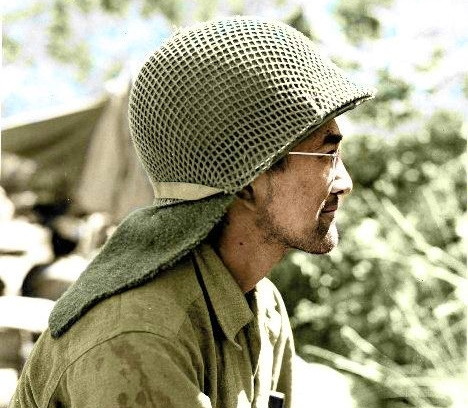
Document Source: A thesis presented to the Faculty of the US Army Command and General Staff College in partial fulfillment of the requirements for the degree Master of Military Art and Science, Military History, by Maj Nathan K. Watanabe, USA B.S., US Air Force Academy, Colorado, 1988, Fort Leavenworth, Kansas 2002 (Doc Snafu Final Check September 12, 2022)
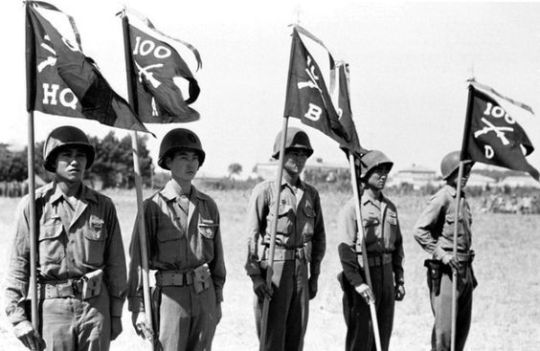
Introduction
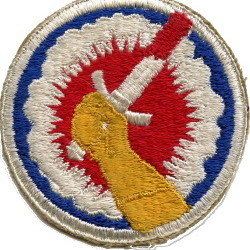

The 442nd Infantry Regiment, later 442nd Regimental Combat Team, was an infantry regiment of the United States Army and was the only infantry formation in the Army Reserve. The regiment is best known for its history as a fighting unit composed almost entirely of second-generation American soldiers of Japanese ancestry (Nisei) who fought in World War II. Beginning in 1944, the regiment fought primarily in the European Theatre, particularly in Italy, southern France, and Germany. The story of the 442nd Regimental Combat Team (442-RCT) is rooted in the history of the Japanese in Hawaii and America itself. As the second generation of Japanese born abroad or the first Japanese generation born in Hawaii and America through the early 1910s and 1920s, the Nisei were American citizens and part of the larger greatest generation to be of the right age to face the conflict of World War II. This generation of Japanese born abroad best personifies the blending of American and Japanese cultures that laid the foundation for a resolute, cohesive, and dedicated unit that accomplished every assigned mission without fail.


The 442nd Regiment is the most decorated unit in the US military history. Created as the 442nd Regimental Combat Team when it was activated on February 1, 1943, the unit quickly grew to its fighting complement of 4000 men by April 1943, and an eventual total of about 14.000 men served overall. The unit earned more than 18.000 awards in less than two years, including 9.486 Purple Hearts and 4.000 Bronze Star Medals. The unit was awarded eight Presidential Unit Citations (five earned in one month). Twenty-one of its members were awarded Medals of Honor. In 2010, the Congressional Gold Medal was awarded to the 442nd Regimental Combat Team and associated units who served during World War II, and in 2012, all surviving members were made chevaliers of the French Légion d'Honneur for their actions contributing to the liberation of France and their heroic rescue of the Lost Battalion.


Arriving in the European Theatre, the 442nd Regimental Combat Team, with its three infantry battalions, one artillery battalion, and associated HQ and service companies were attached to the 34th Infantry Division. On 11 June 1944, near Civitavecchia, Italy, the existing 100th Infantry Battalion, another all-Nisei fighting unit that had already been in combat since September 1943, was transferred from the 133rd Infantry Regiment to the 442nd Regimental Combat Team. Because of its combat record, the 100th was allowed to keep its original designation, with the 442nd renaming its 1st Infantry Battalion as its 100th Infantry Battalion. The related 522nd Field Artillery Battalion liberated at least one of the satellite labor camps of Dachau concentration camp and saved survivors of a death march near Waakirchen.
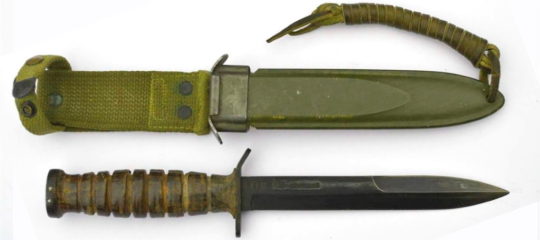
The 442nd saw heavy combat during World War II and was not inactivated until 1946, only to be reactivated as a reserve unit in 1947 and garrisoned at Fort Shafter, Hawaii. The 442nd lives on through the 100th Battalion/442nd Infantry Regiment, which has maintained alignment with the active 25th Infantry Division since a reorganization in 1972. This alignment has resulted in the 100th/442nd Infantry Regiment's mobilization for combat duty in the Vietnam War and the Iraq War, in which the unit was awarded the Meritorious Unit Commendation. With the 100th/442nd Infantry Regiment the last infantry unit in the Army Reserve, the 442nd's current members carry on the honors and traditions of the historical unit.
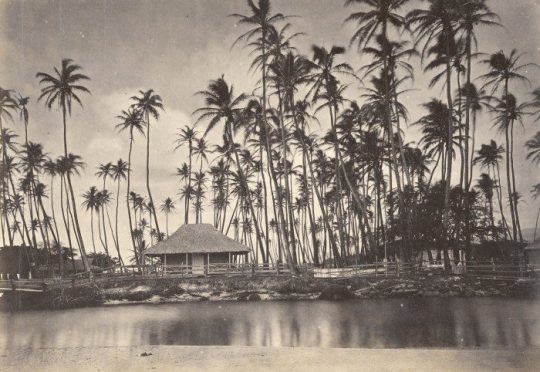
Last Voyage of the Inakawa-Maru - 1806 The first known arrival of Japanese to the Kingdom of Hawaii came on May 5, 1806, involving survivors of the ill-fated ship Inawaka-maru who had been adrift aboard their disabled ship for more than seventy days. The Inawaka-maru, a small cargo ship built in 1798 in Osaka, was owned by MansukeMotoya of Kitaniura, Hiroshima, and was chartered by the Kikkawa fiefdom in Iwakuni, a district in the present Yamaguchi prefecture, to transport floor mats and horse feed to the residence of the Kikkawalord in Edo (Tokyo today). The trip began in November 1805. The ship was manned by Capt Niinaya Ginzo, thirty-three years old; Master Ichiko Sadagoro, fifty-three; and four sailors: Hirahara Zenmatsu, thirty-four; Akazaki Matsujiro, thirty-four; Yumori Kasoji, thirty-one, all from Kitaniura; and Wasazo, twenty-seven, from Higashinomura. The ship departed from Kitaniura, Hiroshima, on November 7, 1805, and took on its designated cargo together with two officials of the Kikkawa fiefdom at Iwakuni. Before leaving for Edo, however, the ship returned to Kitaniura and then headed for Edo on November 27, 1805. On December 21, 1805, the Inawaka-maru arrived in Shinagawa, a port in Edo. After unloading the cargo headed southward stopping at Kanagawa, Uraga, and Shimoda. On January 6, 1806, the vessel departed Shimoda for its final homebound voyage.

While crossing the Sea of Enshunada near the Shizuoka prefecture, the Inawaka-maru encountered a snowstorm backed by a strong east wind. The snowstorm turned into heavy rain, and the wind became stronger. The ship was soon disabled and was blown toward the Eastern Pacific. On January 7, 1806, due to the increased force of the wind, the crew cut the mast down, and the disabled ship began drifting further eastward. On January 11, two rocky islets were sighted, but a decision was made not to make a landing. The ship continued drifting eastward. The supply of water ran out on January 20. Except for relief during an occasional rainfall, the crew often went without water for four or five days. Rainwater was collected by every means possible. At times they had to quench their thirst by sucking on cloth that contained some moisture. By February 28, the supplies of rice and water were nearly exhausted. The last dinner was cooked with the last little supply of rice. They all prepared for death, hoping that their ship would take them to their Buddhist paradise. On March 15, a flying fish jumped into the ship. Zenmatsu made a soup with it and shared it with the rest of the crew. They made hand-made hooks and used the innards of the flying fish to catch more fish. In this way, they were able to regain their strength. Some fish were saved by drying.
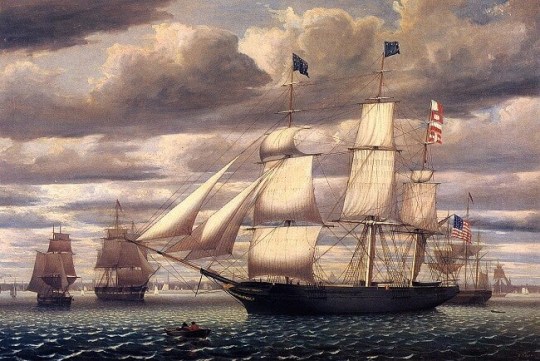
On March 20, 1806, a foreign ship appeared. The crew of the Inawaka-maru climbed onto the deckhouse roof and signaled the ship by waving a mat and shouting for help. At first, they seemed not to have been seen, but finally, the ship came closer and lowered her sails. Four foreigners, including one carrying a sword, who seemed to be the captain, came up on deck as the ship circled around the Inawaka-maru. Upon realizing that the Japanese vessel was disabled, they came aboard. Two sets of Japanese swords that belonged to the two officials from Iwakuni were found in a closet at the stern and were confiscated. The captain asked the Japanese something, but they could not understand English. The Japanese asked for food by putting their hands on their stomachs, pointing to their mouths, and bowing with their hands together. The captain touched each one's stomach and took a look around the galley. When he realized that they had no food or water, he took all eight Japanese on board his ship, assisting them by taking their hands and putting his arms around them. The personal belongings of the Japanese were also transferred. The rescuing ship was an American trading vessel, the Tabour, commanded by Captain Cornelius Sole. The Japanese had been rescued after being adrift in the Pacific for more than seventy days. Aboard the Tabour, the Japanese were served a large cup of tea with sugar.

It tasted so good that they asked for more, but the captain did not allow them to eat anything more on that day (remedy for starvation). On the following day, they were given two cups of sweetened tea followed by a serving of gruel. This was repeated for another three days. On the fifth day, when everyone gradually became well, they were served rice for breakfast and dinner and bread for lunch. The bread, tasted by the Japanese for the first time, was described by Zenmatsu as similar to a Japanese confection called Higashiyama, which is shaped round like a cross-section cut of thick daikon (radish). The Japanese had no words to express their gratitude and they were deeply touched by the kind treatment received from the foreigners. On May 5, 1806, the Tabour arrived in Hawaii and docked in Oahu after forty-five days of sailing following the rescue. Zenmatsu reported being rescued by a foreign ship at 4000 RI (9760 miles) from Hawaii and 1000 RI (2440 miles) from Japan. He also stated that the distance between Japan and Hawaii is 5000 RI (12.200 miles). Zenmastu was considerably off in his distance estimation as the distance between Japan and Hawaii is 3800 miles. According to Zenmatsu, nearly five hundred men and women onlookers gathered around them when they disembarked from the ship.
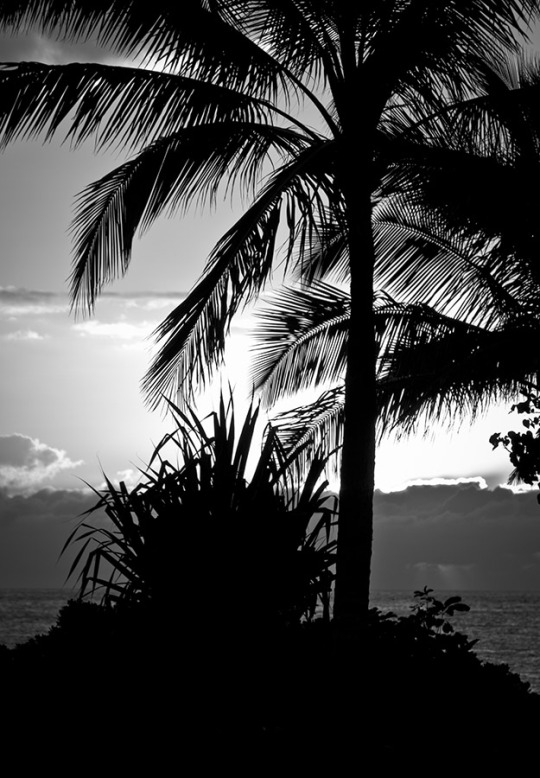
They camped outdoors on the night of their arrival. Steamed potatoes (sweet potato or taro) were brought to them the following day. On the second day after their arrival, Zenmatsu reported, the building of a house for the Japanese was started, probably on orders of the chief. More than fifty persons were engaged in cutting trees from the mountains and building a house with a thatched roof. Only four days after their arrival, the house was completed, and the eight Japanese moved in. People brought Kalo (taro) and Uala (sweet potatoes) in gourd containers while the house was being constructed. A fence was built around the house when the Japanese moved in to prevent others from entering, and a cook was assigned to prepare meals for them. Two Hawaiian guards were assigned since so many onlookers were gathering around the fence trying to look into the house. To satisfy the onlookers' curiosity, four Japanese in turn walked inside the fence and after a while, people started leaving, talking to each other. More and more onlookers arrived for almost two weeks, but their numbers gradually diminished to thirty to fifty a day.
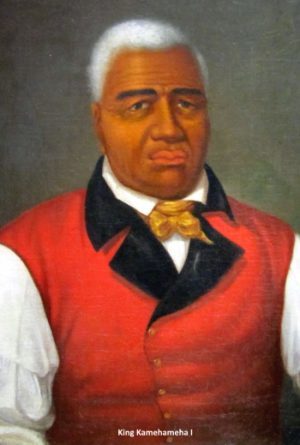
The Japanese remained in Hawaii for more than three months until an American ship offered to take them home. When the trading ship Perseverance, commanded by Captain Amasa Delano, arrived in Hawaii, Delano learned that Captain Sole had left the Japanese under the care of King Kamehameha I until another ship could take them back to Japan via China. Capt Sole left one of the anchors from the Japanese wreck, forty axes, and some other articles to compensate for their living in Hawaii. Sole also left a note describing the Japanese for anyone who could take them back to Japan. Thus, Delano offered to take them as far as China so that they could find their way back home on another ship inasmuch as only Dutch and Chinese ships were allowed to enter Nagasaki, the only port then open to foreigners. On August 17, 1806, all eight Japanese left O'ahu with Delano aboard the Perseverance. Zenmatsu described the departure in personal terms: August 15, was a day for festivities for our home village shrine. Everyone felt so homesick, longing to return home. On that same day, an American trading ship, the Perseverance, about 2000 Goku (300 tons), with a crew of sixty-three, arrived in Hawaii for their provisions. Learning of our presence, they came to see us. Upon seeing a banner-like object that was left by the captain of the rescuing ship, and after talking among themselves, they urged us to board their ship.

Japanese Survivors Leave Oahu - 1806 The Hawaiians, old and young, who had become friendly to us during our stay, brought taro, sweet potatoes, beef, pork, and chicken to the ship and stayed around us, and one by one bade farewell to us. When the ship left Honolulu on August 17, about five hundred Hawaiians came out to the shore, waving their hands and shouting 'goodbye'. They stayed to see us off until the ship was out of sight. We were so deeply touched that we all could not hold back our tears. About 2000 RI (4880 miles) of sailing away from Hawaii, the Americans pointed to the north saying 'Japan! Japan!' We became excited, purified ourselves, and bowed toward the direction of Japan. When we begged the Americans to take us to Japan, they indicated 'no' by gesturing with signs signifying that we would be beheaded. The Perseverance arrived in Macao on October 17, 1806. On December 25, the Japanese were sent to Jakarta, Java, on a Chinese ship. They were in Jakarta for more than four months and apparently contracted malaria and other tropical diseases.
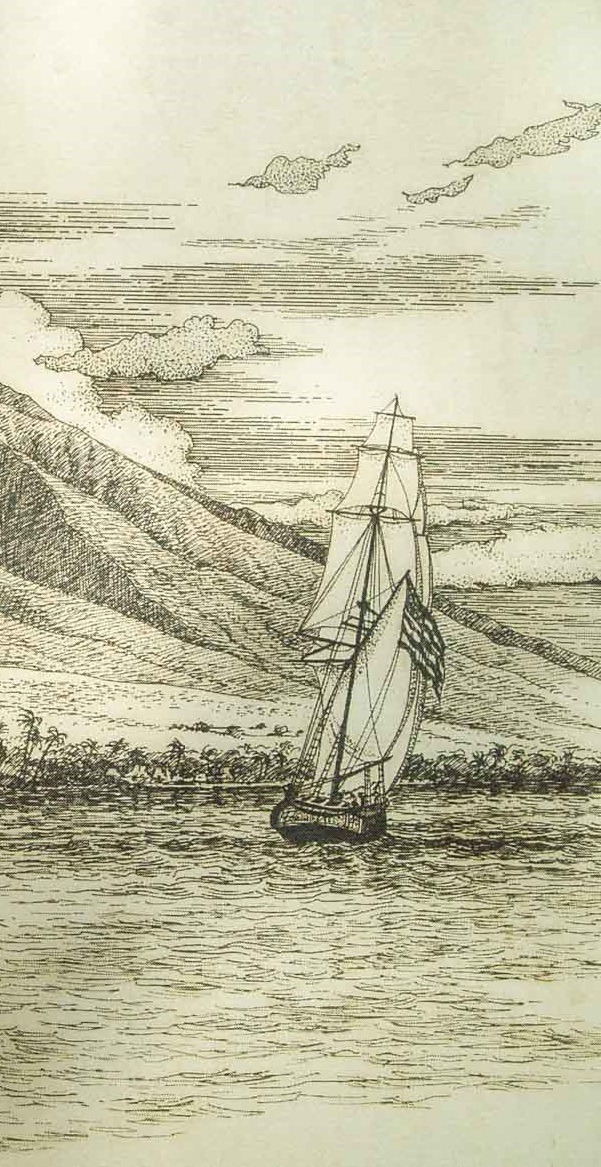
Thus, only three of the original eight finally reached Nagasaki on June 17, 1807, onboard an American ship flying a Dutch flag. All others died in Jakarta or on the ship. Unfortunately, one more died soon after returning to Nagasaki, and another committed suicide during the official interrogation there. Zenmatsu was jailed and underwent severe interrogation by officials as he had violated the Sakoku edict, which prohibited Japanese subjects from leaving the country. Zenmatsu was kept in Nagasaki for five more months before being allowed to return to his village on November 29, 1807. Soon after his return, he was summoned by Lord Asano of Aki to report on his overseas experiences. He died six months after his return. The King delegated the responsibility for the Japanese to Kalanimoku who had 50 men construct a house on May 6 for the Japanese. It took four days to build and a cook and two guards were assigned to the house, which attracted crowds to these men of different ethnicity. On August 17, the Japanese left Hawaii aboard the Perseverance to Macau. From there they took a Chinese ship to Jakarta on December 25. In Jakarta, they fell ill and five died there or on the voyage to Nagasaki where they arrived on June 17, 1807, and where another died. At the time of the Sakoku, it was illegal to leave Japan and the remaining two survivors were jailed and interrogated. One committed suicide and the remaining survivor Hirahara Zenmatsu eventually made it home on November 29 1807 but was summoned by Asano Narikata, the Daimyō of Hiroshima, to recount his odyssey of an experience titled Iban Hyoryu Kikokuroku Zenmatsu. Hirahara Zenmatsu died six months later.

Gannenmono In 1866, Eugene Miller Van Reed, a Dutch American, went to Japan as a representative of the Hawaiian Kingdom. Read the full article
#133rdFieldArtilleryBattalion#16.VGD(German)#198.PB(German)#201.-Gebirgsjäger-Bataillon#202.-Gebirgsjager-Bataillon#232ndEngineerCombatBattalion#34thInfantryDivision#388.-Infanterie-Division#3rdInfantryDivision#442ndInfantryRegiment#442ndRegimentalCombatTeam#522ndFieldArtilleryBattalion#602.-Schnellabteilung#716.-VolksGrenadier-Division#92ndInfantryDivision#933.-Grenadiere-Regiment#AkijiYoshimura#AlamoRegiment#AmericansofJapaneseAncestry#Anzio(Italy)#ArdantduPicq#ArmyHawaiianDepartment#ArnoRiver#AsanoNarikata#BelfortGap#Belmont#Belvedère#BenjaminHarrison#Biffontaine#Bologna
0 notes
Photo

Neunhundertsechzehntes Bier:
Hoppebräu Helles - Zweiter Sud 4,9% vol. Waakirchen, Deutschland
Die zweite Auflage des klassischen Hellen vom Hoppebräu fließt erwartungsgemäß klar goldgelb ins Glas. In der Nase recht viel Malz und ein Hauch von Hopfen. Geschmacklich geht es dann malzig und vollmundig weiter, mit einer leichten Hopfenbitteren, die das Ganze nicht zu süß werden lässt. Ziemlich süffig und solide gemacht. Und meiner Meinung nach besser als der erste Sud. 7/10
1 note
·
View note
Text

Japanese American members of the 522nd Field Artillery Battalion collect the belongings of German Waffen-SS soldiers. May 3, 1945, Waakirchen, Germany.
6 notes
·
View notes
Text

Waakirchen Projekt.
2 notes
·
View notes
Photo

Waakirchen, Germany: People take part in a memorial service in the snow for the victims of the Sendlinger Mordweihnach, a revolt of the Bavarian population against the Habsburg occupation, which was bloodily suppressed on Christmas Day in 1705
Photograph: DPA/Alamy
34 notes
·
View notes
Text
0 notes
Text
Lanserhof plant Radiologiepraxis - und schlitzt dafür einen Hügel auf
Lanserhof plant Radiologiepraxis – und schlitzt dafür einen Hügel auf
Waakirchen: „…Ein Schlitz im Hügel, eingefasst von Glas und Beton: Mit extravaganter Architektur macht der Lanserhof auf dem Steinberg weiter von sich reden. Der Waakirchner Bauausschuss ist begeistert und befürwortete den Antrag für einen Radiologie-Bau – unter der Erde. Nach Sylt geht’s auf dem Steinberg weiter. Das hatte Lanserhof-Chef Christian Harisch bereits angekündigt, als sich der…

View On WordPress
#Antrag#Bauausschuss#Bauvorhaben#Beton#Genehmigung#Gesundheitsklinik#Glas#Hügel#Lanserhof#Reetdach#Schlitz#Steinberg#Waakirchen
0 notes
Text
Tales Of Misadventures A few year ago I started importing lights from a German company. They were based at a little village called Waakirchen in Southern Germany, not far from Munich. The first order I picked up was for about 5K worth. So being the initial order I decided to drive down and collect them. The Munchen Oktoberfest was on at the time, so I decided to go for a few days and visit the event. A good mate of mine told me he would come with me so I booked a crossing from Hull, the plan being to drive the 1200 kilometers over the first day. At the time I had a little clapped out Nissan Cherry. It was that bad when my dad bought it, that my mother wouldn't ride in it. I loved it, it was like a little rally car, I ended up spreading it up the A1 just outside the Metro Centre in a 6 car pile up. A Pile Of Cash Now a the time, being young, and skint, I didn't have the money readily available to pay for these lights. So the deal with my customer was that he put the money in the bank before I left. As we were loading up the car to set off, he turned up in person, apologised for not loading my bank account for me, and gave me a bag with the cash in. I shoved it under the seat and we set off. Arrival In Deutschland And Cool Fräuleins. When we arrived in Munich, we had a bit of trouble finding an hotel. The fact that the cities biggest event was in full swing meaning hotel rooms were in short supply, hadn't occurred to us. We eventually managed to find a doss house in a seedy part of the city. I admit when we got in the room and it was decorated with what would now be termed LGBT posters, and the leaflet on the bed had times for the live sex shows in the hotel we were a bit perturbed, but hey, two single lads we were out on the town. We found a rather nice little bar, pretty much empty but we had just drove 1200 KM and needed a drink. The two barmaids were absolute stunners, tall blond Aryan goddesses. I had learnt some pidgeon German, you know how to order a beer, tell a girl she had beautiful eyes, that sort of thing. So I hit them with the full charm, like focused laser beams, thought it would knock them bandy. Bloody nothing, not even a smile. FFS we were going to have our work cut out here. I know they were supposed to be cool and Teutonic and all, but this was icily arctic. By now the bar had filled up, when I turned round and actually took notice, it was full of young men sat kissing each other. Aah, perhaps the barmaids lack of response was for a reason. After a bit of a pub crawl we headed off to our hotel. The Oktoberfest At the time, it was widely considered that the continental fairground attractions were a few years ahead of the best the UK had to offer. When we hit the Oktoberfest, we realised they were a couple of decades in front. Everything was just, bigger, faster, moderner, better decorated. We had a full day there, including sampling their beer served in those bloody Steins, jeez, its a wonder they are not a nation of alcoholics. After we had our fill, of the Oktoberfest and the beer. We headed back to the hotel. I had parked our car out the front of it, and just as we set off to the festival, I had opened the boot to retrieve my coat. Setting off back I put my hand in my pocket and realised I no longer had the keys. I asked Matthew if I had given them to him, I hadn't as it turns out, I had left them in the lock of the boot. A bloody car thieves Christmas present. With 5K of someone else's money under the drivers seat. Feeling sick as a parrot we got back in double time, to find the car still there, with a note under the windscreen wiper saying, "Found your keys, left them in the pub over the road!", in English to boot. Imagine if that had been say Sunderland. There would have been a note on the empty parking space saying found your keys left your car in the river Wear thanks for the cash. Adolf And The SS We successfully collected the lights and stuff without further incident. As we weren't in a hurry we had a more leisurely drive back towards Holland. Coming across a really small rest stop, we decided to have a quick drink. We parked up and went to the two ladies manning it. They were rather abrupt and told us that they didn't in fact open for 20 minutes. An elderly gent sitting at a nearby table asked us if we wanted a drink. When we nodded he gestured for us to follow him. Being 17 and a bit naive we did so. He took us to a house over the road and down into the basement. Which happened to be a fully kitted out bar, something that would put some commercial establishments to shame. He poured us all a beer. While Matthew was trying to make small talk with the guy, I wandered around the room. One wall was covered in photos and I was interested to see them. When I got close up, it turns out they were all framed pictures of Adolf Hitler with groups of SS men. The largest photo had Adolf stood with a young officer. I couldn't be certain but it looked a little like the guy who had brought us down there. Having recently seen the film Boys from Brazil, and in my teenage imagination expecting a guy with a dentists drill to pop out any minute. I hurried Matthew along, thanked our host and we lived to tell the tale. Took All This Lot For A Holiday Did We Sir When we reached dear old blighty, we disembarked the ferry and set off towards the immigration sheds. Now, if you have ever done this, you will know there are two lanes. Goods to declare, and nothing to declare. I promptly drove into the nothing to declare side. An officer stopped me with a wave of his hand. "Are you aware sir, that this is the nothing to declare lane." all very polite and congenial. "I certainly am officer", says I with my most respectful grin. Now I should say at this point, that the pile of equipment we had purchased whilst in Germany filled the car to the roof. In fact the seats were pushed as far forward as they would go so we could fit everything in. "So you have nothing to declare son, is that correct?" he retorted. "Yup" says I. "Oh, so you have taken this lot for a holiday to the Oktoberfest have you, Bloody well pull over there and don't move till I come see you", well, his politeness didn't last. We sat there for the best part of an hour whilst everybody else disembarked. When he finally came to see us he had a more authoritarian attitude. "Now son, would you like to explain why you don't think you have anything to declare when your car is full to the gunnals?" "Yes says I meekly, here is my receipt, as you can see I paid VAT in Germany for everything, and as their rate is higher than ours, I don't need to pay you, sir" Oh his face was a picture, he basically told us to piss off home. Munich Oktoberfest Read the full article
0 notes
Photo

Almost done here. Looks like they put humpty dumbty together again after all. I’ll miss the clean air and perfect diet (which is to eat nothing) when back. Regain your health! #littlerickyrecommends #richardmishaandesign #healthiswealth (at Waakirchen) https://www.instagram.com/p/CVTbCp8oF4lr2sdwRfGWaCORS0obzX6dngkqpA0/?utm_medium=tumblr
0 notes
Photo

Achthunderteinundneunzigstes Bier:
Hoppebräu West Coast IPA 6,9% vol. Waakirchen, Deutschland
Im Glas leicht trübes Goldgelb, in der Nase intensive Mango- und Ananasnoten, unterstrichen von leichten Malzaromen. Geschmacklich dominiert dann im Antrunk auch das Malz, gefolgt von einer präsenten, fruchtigen und gut eingebundenen Bitteren. Gut gemacht. 7/10
#hoppebräu#west coast ipa#india pale ale#ipa#waakirchen#bavaria#craftbeer#craft beer#beer#ale#bier#meinbier#7/10
1 note
·
View note
Photo

Heisses Girl aus Waakirchen https://bit.ly/3eToZzz Auf Telegram folgen: https://ift.tt/3dOpQ5z
0 notes
Photo

Reconstruction and renovation farm Waakirchen (2014) http://bit.ly/2KDka1R
0 notes
Photo

Reconstruction and renovation farm Waakirchen (2014) http://bit.ly/2YIl6Wg
0 notes
Photo

Dark Secret Café by Eybel Schokomanufaktur in Waakirchen am Tegernsee eröffnete im Sommer 2018. #DarkSecretCafe #eybel #schokomanufaktur #schokoladenquelle #Waakirchen #tegernsee #EybelSchokomanufaktur #chocolate #schokolade #delicious #instafood #foodporn #foodbloggers #foodblogger #love #instatravel #foodie @eybelschokolade #ganzmuenchen #ganzmuenchende #münchenblog #münchenblogger #munichblog #munichblogger #picoftheday #bilddestages (hier: Eybel Schokomanufaktur)
#darksecretcafe#eybel#schokomanufaktur#schokoladenquelle#waakirchen#tegernsee#eybelschokomanufaktur#chocolate#schokolade#delicious#instafood#foodporn#foodbloggers#foodblogger#love#instatravel#foodie#ganzmuenchen#ganzmuenchende#münchenblog#münchenblogger#munichblog#munichblogger#picoftheday#bilddestages
0 notes